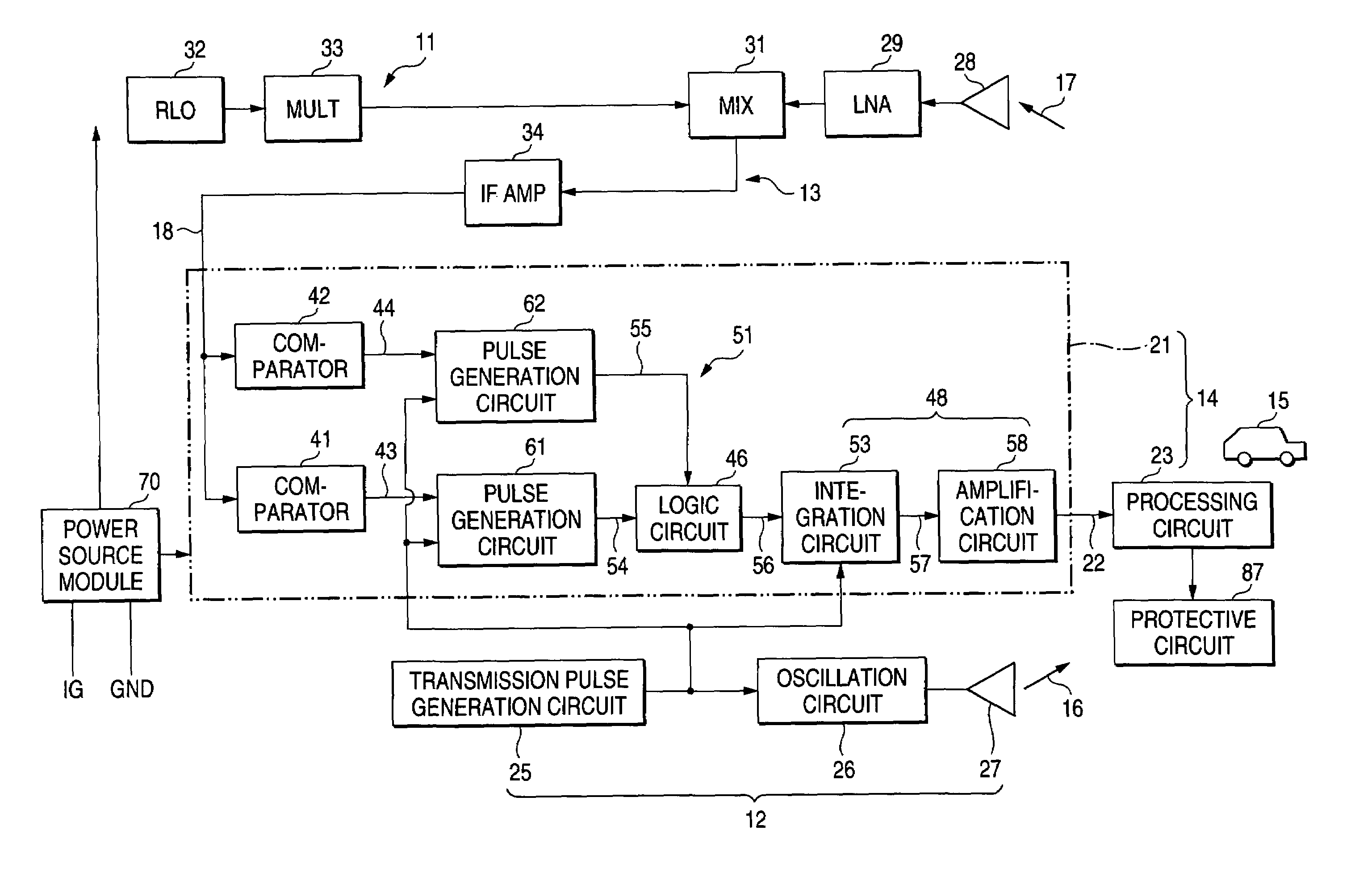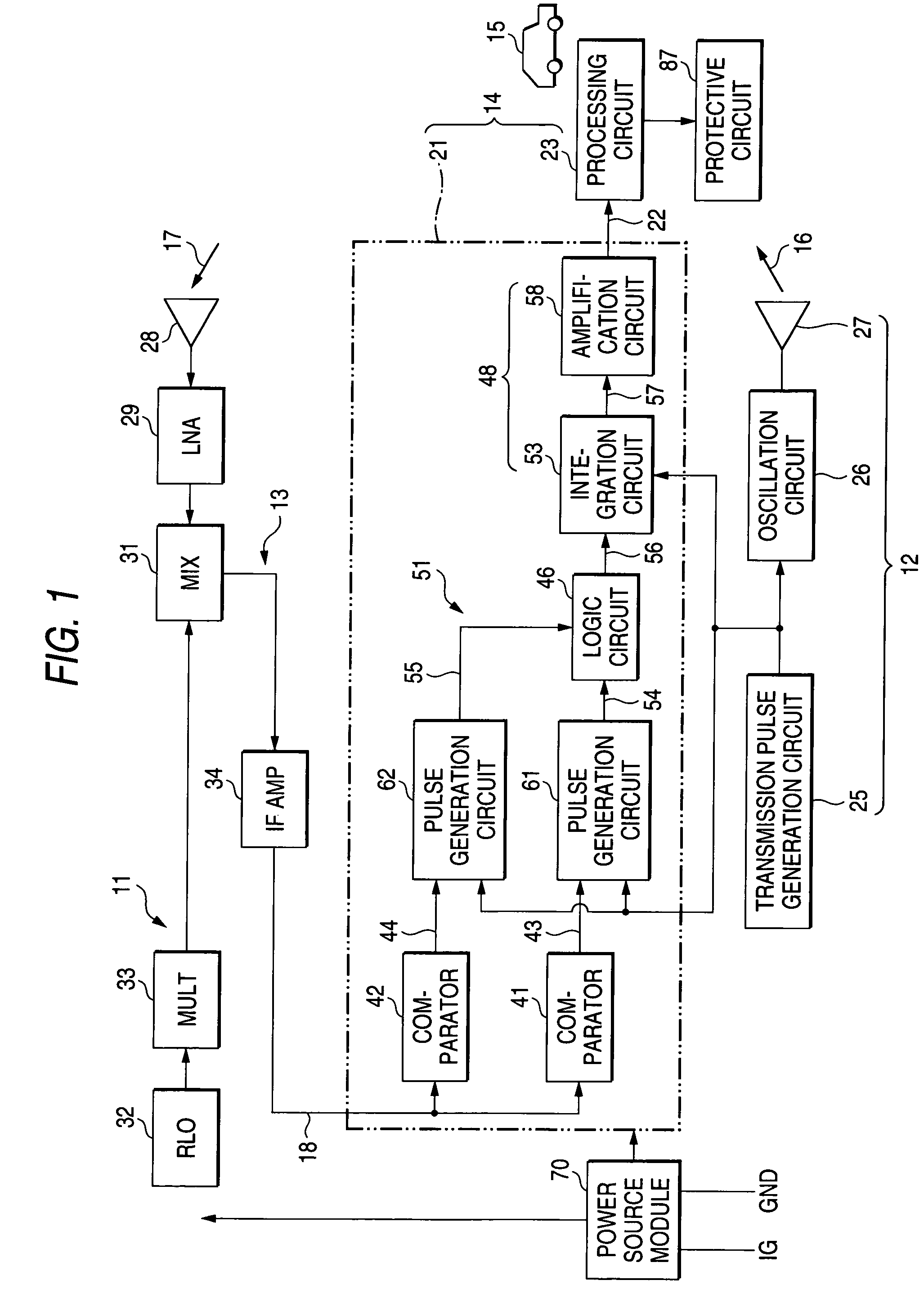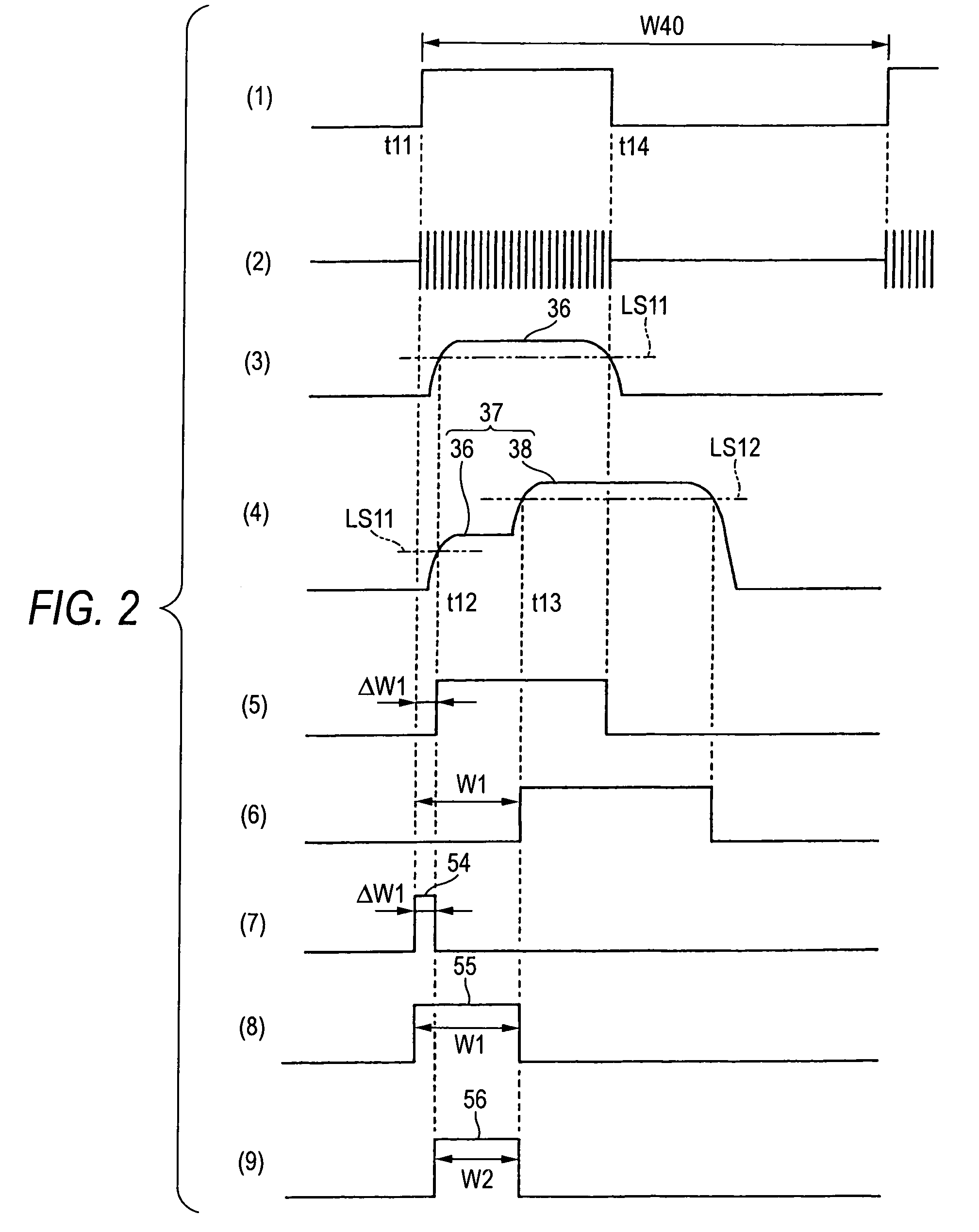Radar
a technology of a distance and a power supply, applied in the field of distance measurement, can solve the problems of narrowing the range of voltage vmin to vmax used, reducing and low resolving power, so as to improve the resolving power of a distance
- Summary
- Abstract
- Description
- Claims
- Application Information
AI Technical Summary
Benefits of technology
Problems solved by technology
Method used
Image
Examples
Embodiment Construction
[0037]FIG. 1 is a block diagram showing the overall configuration of a radar 11 according to an embodiment of the invention. This radar is mounted on a vehicle, such as an automobile, and basically includes a transmission section 12, a receiving section 13, and a distance detection section 14. The transmission section 12 emits a transmission wave 16 forward. A wave 17 reflected by a target 15 (e.g., an automobile) is received by the receiving section 13, and a line 18 outputs the wave as a received wave. The distance detection section 14 includes a conversion section 21 and a processing circuit 23. The conversion section 21 converts a time difference W1 between the transmission time at which the transmission wave is transmitted and the receiving time at which the received wave is received into the level of an electrical signal; e.g., a voltage in the embodiment, through use of a predetermined conversion characteristic. A signal having a voltage corresponding to the time difference W...
PUM
 Login to View More
Login to View More Abstract
Description
Claims
Application Information
 Login to View More
Login to View More - R&D
- Intellectual Property
- Life Sciences
- Materials
- Tech Scout
- Unparalleled Data Quality
- Higher Quality Content
- 60% Fewer Hallucinations
Browse by: Latest US Patents, China's latest patents, Technical Efficacy Thesaurus, Application Domain, Technology Topic, Popular Technical Reports.
© 2025 PatSnap. All rights reserved.Legal|Privacy policy|Modern Slavery Act Transparency Statement|Sitemap|About US| Contact US: help@patsnap.com



